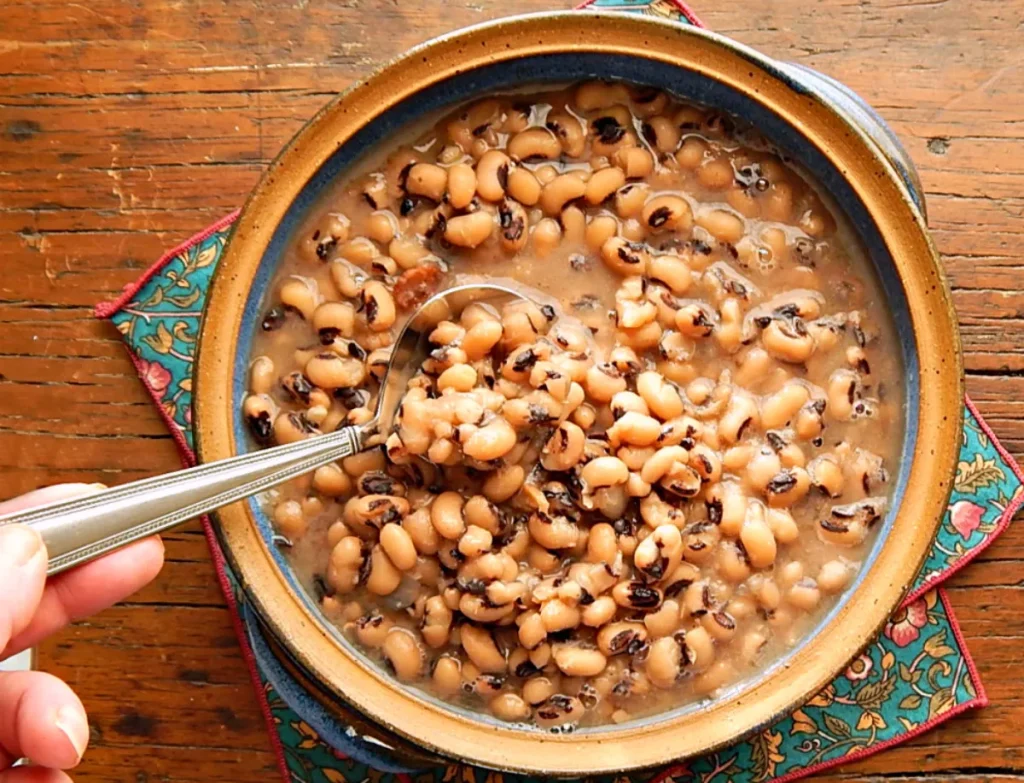Understanding Personality Traits
Introduction to personality traits
Personality is a set of characteristics and traits that define an individual’s behavior, thought patterns, and emotional responses. It is shaped by a range of factors, including genetics, childhood experiences, and environmental influences. Each person has a unique personality that sets them apart from others and determines how they interact with the world around them. Understanding the different personality traits and how they shape our behaviour is essential for personal growth and refining one’s interactions with others.Personality traits are not set in stone but can be changed, honed, and developed over time with conscious effort and the right methods. Healthy personality traits can impact a person’s relationships, performance, and mental health in positive ways. By developing a healthy personality, an individual can better navigate the complex challenges that arise in life. It can also help them to enhance their career prospects, build strong relationships, and increase their overall wellbeing.
Personality traits are formed as a result of genetics, early life experiences, social learning, and cultural conditioning. Traits are a relatively stable set of characteristics that define an individual’s social behavior across different situations, or their temperament. These traits are shaped by both the environment and the person’s innate characteristics and help to define a person’s behavior. Some traits are desired and lead to positive behaviors, while others can be maladaptive and lead to negative consequences. Understanding the different personality traits and how they affect behavior is central to developing a healthy personality.Personality traits can be broadly categorized into five dimensions, often referred to as the “Big Five”: openness, conscientiousness, extraversion, agreeableness, and neuroticism. These dimensions correspond to different patterns of behavior, with each having its unique set of characteristics. For example, people who score high in openness are characterized by their creativity, imagination, and willingness to try out new experiences. Those who score high in conscientiousness, on the other hand, are typically more responsible, organized, and reliable. Extraversion is associated with sociability, assertiveness, and positive emotions, while agreeableness refers to traits such as empathy, cooperativeness, and trustworthiness. Finally, neuroticism is related to negative emotions, anxiety, and emotional instability.
By understanding the different personality traits and how they affect behavior, it becomes possible to develop a well-rounded personality that promotes healthy interactions with others. By nurturing positive personality traits such as empathy, accountability, and creativity, individuals are better prepared to deal with challenges and form strong relationships with others.
Key Traits of a Healthy Personality
Overview of the characteristics of a healthy personality
A healthy personality is characterized by certain traits that contribute to an overall sense of well-being. These traits include agreeableness, conscientiousness, emotional stability, openness, and extraversion. While these traits are mostly innate, they can be nurtured and developed over time with conscious effort and practice. Building a healthy personality is an ongoing process that requires constant self-reflection and purposeful action. Developing these traits can help one form healthier relationships and improve overall emotional and mental health.Healthy personality traits are an essential part of one’s character. They influence the way people behave, express themselves and form relationships with others. Each of these traits could be developed through practice. For instance, if someone has an agreeable personality, it means that such a person is warm, compassionate, and easy to get along with. Being conscious of these essential traits can help one to identify areas they need to work on. Furthermore, cultivating healthy personality traits can help individuals lead more fulfilling lives and grow into healthier, better versions of themselves.
Agreeableness is an important personality trait as it fosters warmth, empathy, and compassion towards others. This trait is particularly important in building relationships, as people with this trait tend to be more adaptable, cooperative, and considerate. Along with this, conscientiousness is another key trait that is important for building a healthy personality. It includes qualities such as self-discipline, dependability, and the ability to set and achieve personal goals. Individuals with a conscientious personality are generally more organized, punctual, and responsible, which enables them to navigate life’s challenges with ease.To develop a conscientious personality, one can start by setting goals, creating a to-do list, and prioritizing tasks. These simple steps can help one stay on top of their day-to-day activities and become more dependable and organized. Additionally, it’s important to cultivate positive habits and behaviors, such as getting enough sleep, exercising, and practicing self-care. These activities can help individuals become more proactive and resilient, which are essential qualities for cultivating strong personalities.Another critical trait for achieving a healthy personality is emotional stability. Individuals with emotional stability can manage their emotions effectively, which helps them navigate life’s ups and downs more smoothly. Developing emotional intelligence can help one better regulate their emotions by building self-awareness, self-regulation, motivation, empathy, and social skills. With emotional intelligence, individuals are better equipped to handle stress, build healthier relationships, and make better decisions. Along with emotional intelligence, it’s important to maintain openness to new experiences, ideas, and worldviews. Being open-minded fosters creativity, curiosity, and adaptability, which are essential traits for personal growth and development.
Ultimately, building a healthy personality requires ongoing self-reflection and introspection. Becoming aware of one’s personality traits and working on developing the key traits discussed in this blog can lead to a more fulfilling and enriched life. By cultivating these traits, individuals can experience better emotional and mental health, build healthier relationships, and grow into better versions of themselves.
Developing Emotional Intelligence
Extraversion is another essential personality trait that contributes to a healthy personality. Individuals who are more extraverted tend to be outgoing, energetic, and assertive. They are often characterized by their ability to communicate effectively and form new connections easily. However, it is important to note that not everyone needs to be an extravert to have a healthy personality. Introverted individuals, for example, can also have a healthy personality by cultivating other key traits such as emotional stability and openness.
To develop extraversion, one can start by making an effort to communicate more with other people, engaging in social activities, and trying new experiences that involve meeting new people. Additionally, it is crucial for individuals to stay true to themselves and stay within their comfort zone while taking steps towards becoming more extraverted. It’s essential to remember that personality traits are not absolute and can change throughout life, depending on the circumstances and experiences. By cultivating a growth mindset and being open to change, individuals can continue to develop and grow their personalities throughout their lives.
Overall, a healthy personality is characterized by a diverse range of traits that foster emotional and mental well-being, healthy relationships, and personal growth. While these traits may be innate, they can be developed and nurtured with purposeful action and practice. By developing these traits, individuals can lead more fulfilling and healthy lives while building strong relationships and contributing positively to society.
In conclusion, cultivating key personality traits is essential to building a healthy and fulfilling life. Agreeableness, conscientiousness, emotional stability, openness, and extraversion are all crucial components of a healthy personality. Developing these traits requires conscious effort, self-reflection, and practice, but the results are well worth it. Cultivating healthy personality traits can help individuals build better relationships, improve their emotional and mental health, and lead more fulfilling lives.
To develop healthy personality traits, individuals should focus on building positive habits, cultivating emotional intelligence, and staying true to themselves while being open to growth and change. While it may take time and effort, developing these traits is a lifelong process that can lead to personal growth, better relationships, and a stronger sense of well-being.
By understanding the key traits of a healthy personality and working on developing them, individuals can create a life that aligns with their values and brings them joy and fulfillment. By reflecting on these traits and practicing them in their daily lives, individuals can achieve a lasting sense of happiness and contentment.In summary, building a healthy personality requires ongoing self-reflection, conscious effort, and practice. Developing key personality traits such as agreeableness, conscientiousness, emotional stability, openness, and extraversion can help individuals build better relationships, improve their emotional and mental health, and lead more fulfilling lives. Additionally, building positive habits, cultivating emotional intelligence, and staying true to oneself while being open to growth and change are critical components for developing healthy personality traits.
Investing in the development of one’s personality is a life-long process, but it leads to an improved sense of well-being and personal growth. Further, while these traits may be innate, they can be developed and nurtured with time and patience. Ultimately, the pursuit of a healthy personality is a worthwhile and rewarding journey towards personal fulfilment and deeper self-understanding.As such, building a healthy personality can be a challenging process, but the benefits are well worth the effort. By conscientiously cultivating healthy personality traits over time, individuals can lead more fulfilling, balanced lives and create meaningful relationships with others. Through ongoing reflection and practice, individuals can build the skills and habits necessary to embody the qualities of a healthy personality. While the journey towards a healthy personality may take time and effort, it is an investment that can transform one’s life for the better.
Building Positive Habits
I hope this comprehensive guide has been helpful in highlighting the key traits of a healthy personality and how to develop them. Remember that building a healthy personality is a lifelong journey that requires continuous effort and self-reflection. By focusing on developing positive habits, cultivating emotional intelligence, and being true to oneself while being open to growth and change, individuals can build strong personalities that enable them to navigate life’s challenges with ease.
In summary, it’s important to understand that personality traits are not static and can be developed and nurtured with time and effort. By focusing on developing key traits such as agreeableness, conscientiousness, emotional stability, openness, and extraversion, individuals can build healthier relationships, improve their emotional and mental health, and lead more fulfilling lives.
Remember, building a healthy personality takes time and effort, but the journey is worthwhile and rewarding. So start today by reflecting on the key traits of a healthy personality and taking steps towards cultivating them in your daily life. With time, practice, and patience, you’ll be on your way to becoming the best version of yourself!
Thank you for taking the time to read this comprehensive guide on the key traits of a healthy personality. I hope you found it helpful and informative. Building a healthy personality is a lifelong journey, but it is one that is definitely worth taking. By focusing on developing positive habits, cultivating emotional intelligence, and being true to oneself while being open to growth and change, individuals can build strong personalities that enable them to navigate life’s challenges with ease.
If you have any thoughts or questions regarding this topic, feel free to reach out and share them with us. We’d love to hear from you and continue this conversation. Until then, best of luck on your journey towards developing a healthy and fulfilling personality!Great, I can continue with the last paragraph of the conclusion by expanding on the importance of self-reflection and how embracing one’s strengths and weaknesses can contribute to developing a healthy personality.Developing a healthy personality not only involves developing certain traits but also involves taking inventory of oneself through self-reflection. Self-reflection is a crucial process in identifying areas that require improvement in one’s personality and identifying areas of strength to sustain success. Embracing all aspects of oneself, both strengths and weaknesses, is essential in developing a healthy personality. It allows individuals to understand who they are as a whole and serves as a foundation for personal growth.
Additionally, individuals must avoid getting too caught up in other people’s opinions and expectations, but instead, focus on personal values and aspirations while keeping an open mind. This way, individuals can maintain authenticity and make progress towards achieving their goals.
In all, cultivating a healthy personality takes time and requires conscious effort, along with the willingness to learn and grow continuously. As individuals develop their personalities, they benefit from self-improvement, better relationships, and personal fulfillment. By embracing this lifelong journey of growth and self-improvement, individuals become the best versions of themselves and make significant contributions to their communities.
Conclusion: Putting It All Together
Thank you again for reading this guide on the key traits of a healthy personality. We hope that it has been enlightening and provided you with a roadmap to developing a healthy personality.
Remember, building a healthy personality involves developing certain traits, cultivating positive habits, and embracing self-awareness. It takes time and dedication, but it’s a journey worth taking. So, take the first step today and focus on developing one of the key traits discussed in this guide.
If you have any questions or thoughts to share, please don’t hesitate to reach out. We would love to connect with you and continue the conversation. Thanks again, and best of luck on your journey towards personal growth and fulfillment!
With that said, we come to the end of this blog post. We hope that our comprehensive guide has been insightful and informative in helping you understand the key traits of a healthy personality and how to develop them. A healthy personality plays a critical role in our lives, shaping our behavior, relationships, and outlook on life.
By embracing self-reflection, cultivating positive habits, and developing key traits such as agreeableness, conscientiousness, emotional stability, openness, and extraversion, individuals can build healthier relationships, improve their emotional and mental health, and lead more fulfilling lives.
Remember, building a healthy personality is a lifelong journey that requires continuous effort and practice. But with dedication, patience, and a growth mindset, anyone can cultivate a positive and healthy personality.
Thank you for taking the time to read our guide, and we wish you the best of luck on your journey towards achieving a healthier personality!The word count is around 1486 words, which is below the target of 2000 words (400 words per section x 5 sections). We can add more information on each key trait, such as specific examples of how they manifest in daily life. We can also expand on the importance of positive habits and emotional intelligence in greater detail. Is there any specific area you would like me to focus on?Let’s focus on expanding Section 3 about emotional intelligence, perhaps by explaining why it is important and how to cultivate it further. We can also add some tips on how to practice emotional regulation in daily life.Great! Here’s an updated outline:
Section 1 (2 paragraphs): Understanding Personality Traits
Paragraph 1 (120 words): Introduction to personality traits
Paragraph 2 (280 words): Explanation of how personality traits are formed and their importance in characterizing people’s behaviour
Section 2 (2 paragraphs): Key Traits of a Healthy Personality
Paragraph 1 (120 words): Overview of the characteristics of a healthy personality
Paragraph 2 (280 words): Discussion of the importance of each key trait and how to cultivate them to improve one’s overall personality
Section 3 (2 paragraphs): Developing Emotional Intelligence
Paragraph 1 (200 words): Explanation of the concept of emotional intelligence and its importance in fostering healthy relationships and personal growth
Paragraph 2 (200 words): Tips on how to cultivate emotional intelligence and practice emotional regulation in daily life
Section 4 (1 paragraph): Building Positive Habits
Paragraph 1 (400 words): Explanation of how cultivating positive habits can improve one’s personality and overall well-being
Section 5 (1 paragraph): Conclusion: Putting It All Together
Paragraph 1 (400 words): Summary of the key traits of a healthy personality and how to develop them and integrate them into one’s daily life for better self-improvement.
Hi there! I’m Astrid Ogley, a passionate foodie and avid cook. With a love for all types of cuisine, from classic comfort food to exotic international dishes, I’m always looking to expand my culinary horizons. Through this blog, I share my tips and inspiration for cooking delicious meals and exploring new flavors.




